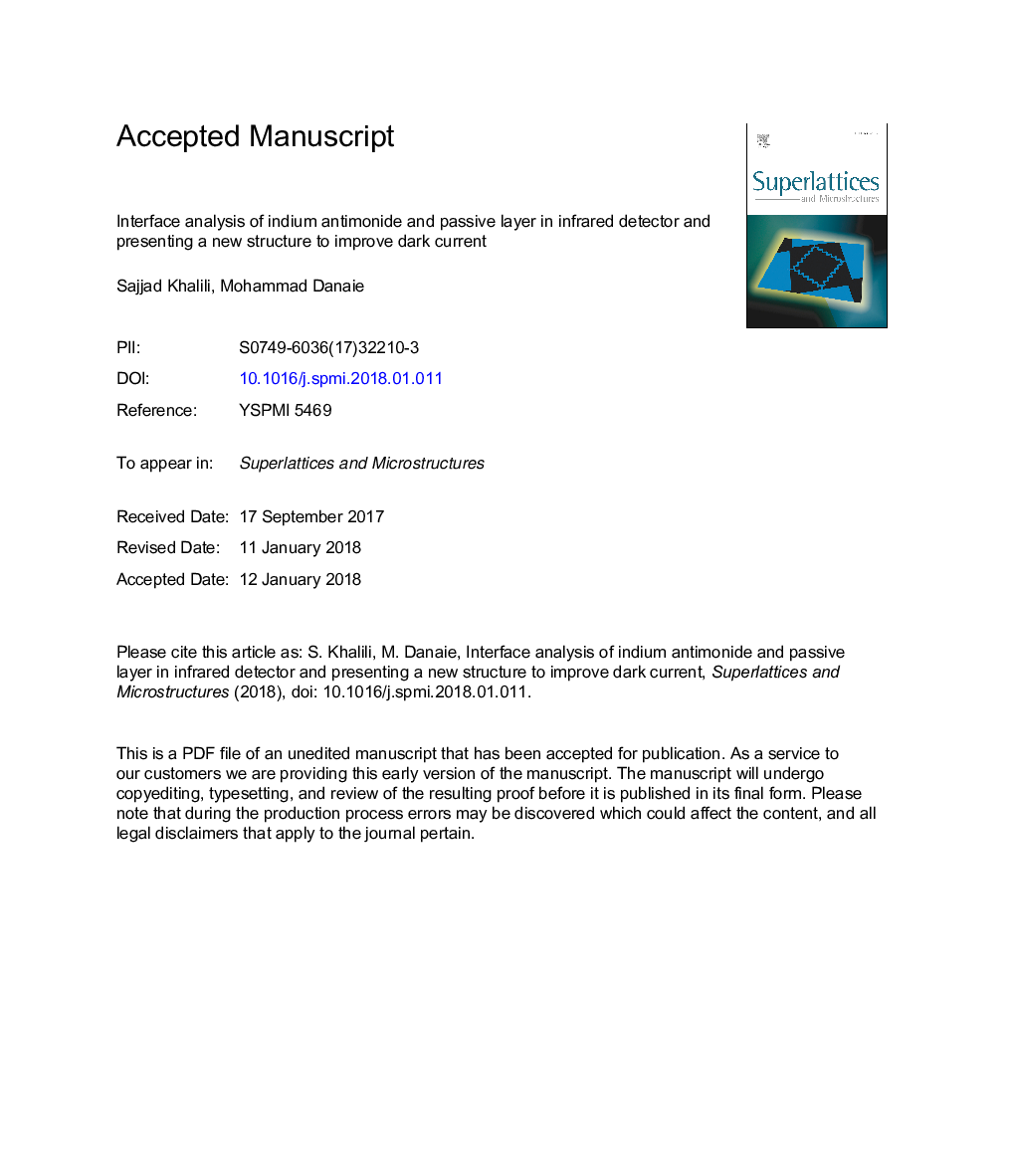| Article ID | Journal | Published Year | Pages | File Type |
|---|---|---|---|---|
| 7938926 | Superlattices and Microstructures | 2018 | 26 Pages |
Abstract
In this paper, we have investigated and simulated the interface between indium antimonide and the passive layer in an infrared detector. One of the most important problems in this detector is its large dark current. We have explained the factors affecting the dark current and examined their effects using numerical analysis. One of the most important and influential factors in this process is the presence of defects in oxide. We have investigated the defect in the SiO2 trap. The impact of acceptor and donor traps, such as density and energy levels has been investigated, and then the defects of constant positive and negative steady-state charges as important factors in the current have been analyzed. We examined the darkness current and finally tried to improve it with a proposed structure. The dark current for a 0.5â¯V reverse bias was decreased from 2.07â¯mA/μm2 to 0.504â¯mA/μm2.
Related Topics
Physical Sciences and Engineering
Materials Science
Electronic, Optical and Magnetic Materials
Authors
Sajjad Khalili, Mohammad Danaie,
